
With four billion daily email users and 77% of marketers recently reporting an increase in email engagement, now’s a great start to start or grow your email list. In this article, we’ll discuss the best newsletter platforms, comparing different options and sharing their pros, cons, and pricing information.
Whether you’re an online business owner, freelancer, or blogger, an email newsletter can be a great way to grow your brand and earn more money.
You can use your email newsletter to connect with your audience, earn passive income, and share your paid products. For years, social media has been a leading way to do this. However, confusing social media algorithms can make it challenging to grow an audience and earn money, so email is a great alternative or addition.
Below, you’ll learn everything you need to know about the best email newsletter platforms so you can choose the right option for you.
How to Choose the Best Newsletter Platform
When you’re choosing your email marketing software, you want to consider the following:
- Pricing: Some email platforms offer free plans for a small list but limited features. Many also increase their prices as your list grows, which is something to consider.
- Segmentation options: Segmenting your emails helps you sort your subscribers into groups. This gives them a more personalised experience and increases conversions.
- Analytics and reporting: Analytics let you see how your emails are performing. At a minimum, you should choose an email newsletter platform that shows data on email open and click-through rates.
- Monetisation features: If you want to earn money directly through email marketing, you’ll want to choose a platform that has advertising and/or paid subscription features. Otherwise, you can use your email newsletter to market your service(s) or product(s) to help you earn more.
- Newsletter templates: Many email newsletter tools have pre-made templates, which makes it easy to create your emails. This is especially useful if you don’t have design skills or want to save time.
10 Best Email Newsletter Platforms
Below, we’ll share the best newsletter platforms for email marketing.
- Beehiiv: best for monetisation
- Substack: best for writers who want paid subscribers
- ConvertKit: best for paid newsletters
- Flodesk: best for flat-rate pricing
- MailerLite: best for detailed analytics
- Brevo: best for free and affordable plans
- Mailchimp: best for integrating other tools
- Campaign Monitor: best for established businesses
- Benchmark: best for advanced features
- Zoho: best for affordability
1. Beehiiv
Beehiiv is an email marketing and website platform for creators, made by creators. It offers a user-friendly interface where you can make beautiful newsletters and landing pages, robust analytics, and monetization features.
Beehiiv enables paid subscriptions, tip jars, sponsorships, or boosts through sharing other people’s newsletters, helping creators monetize their content. They also don’t take a cut from earnings. With SEO optimization and customization options, Beehiiv empowers creators to build distinctive, discoverable newsletters that can evolve into sustainable businesses.
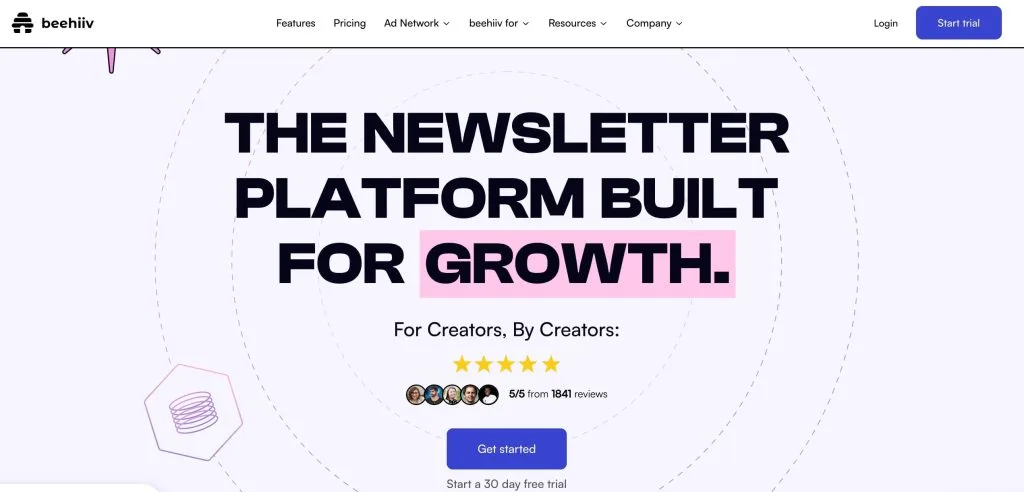
Pros of Beehiiv:
- Monetisation features
- They don’t take a cut of your earnings
- Free option for 2,500 subscribers or less
- Unlimited email sends
- Website hosting
- Email survey and A/B testing features for paid plans
- Can set up rewards for people who share your newsletter
- Monetisation options with ad networks and paid subscriptions
- 30-day free trial
Cons of Beehiiv:
- Limited customisation
- Price increases as your list grows
Beehiiv Pricing:
- $0-$399 per month, depending on features and number of subscribers
- Free plan for up to 2,500 subscribers
TIP: Use this link to receive a 30-day free trial and 20% off your first three months of Beehiiv
2. Substack
Substack is slightly different from traditional email marketing platforms that have automation features. However, Substack is ideal for writers who want to start an email newsletter and share their written work with subscribers. You can also get paid for your newsletter with Substack’s paid premium subscription.
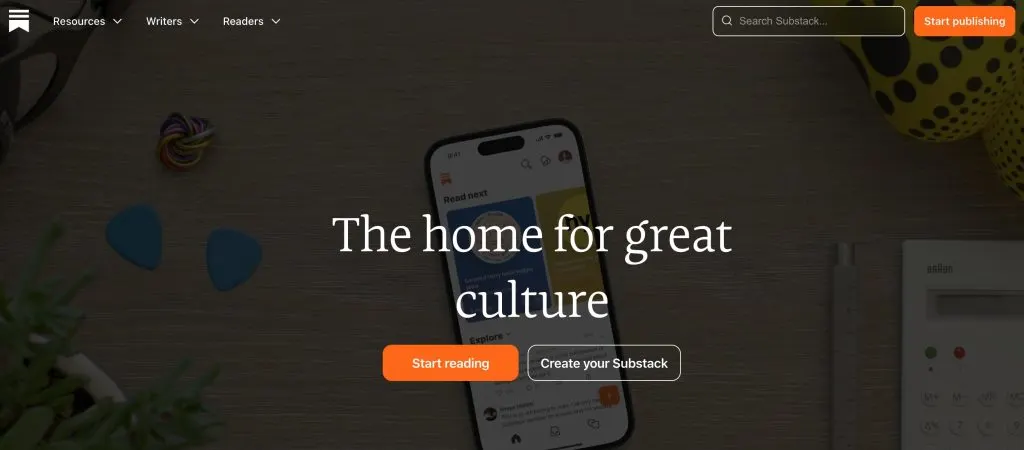
Pros of Substack:
- Easy set up
- Simple organisation with unlimited categories, also known as publications
- Multimedia features (e.g., text, video, images, embeds, etc.). They also plan to expand these features further.
- Monetisation option with paid subscription
- Can offer rewards for people who refer your newsletter
- Discussion thread allows your readers to interact with each other
Cons of Substack:
- Lack of automation sequences
- No list segmentation
- Limited design elements
- Substack takes a cut of your earnings
Substack Pricing:
- Writing and sharing Substack newsletters is free
- You can implement a paid subscription at whatever price you’d like, and Substack gets 10% of your payments
3. ConvertKit
ConvertKit helps over 600,000 creators with email marketing and monetisation tools that work together for business growth. Their creator network also lets you work with other creators to cross-promote your content to reach more people and earn more. They also have a free plan of up to 10,000 subscribers, which is significantly more than most free plans.
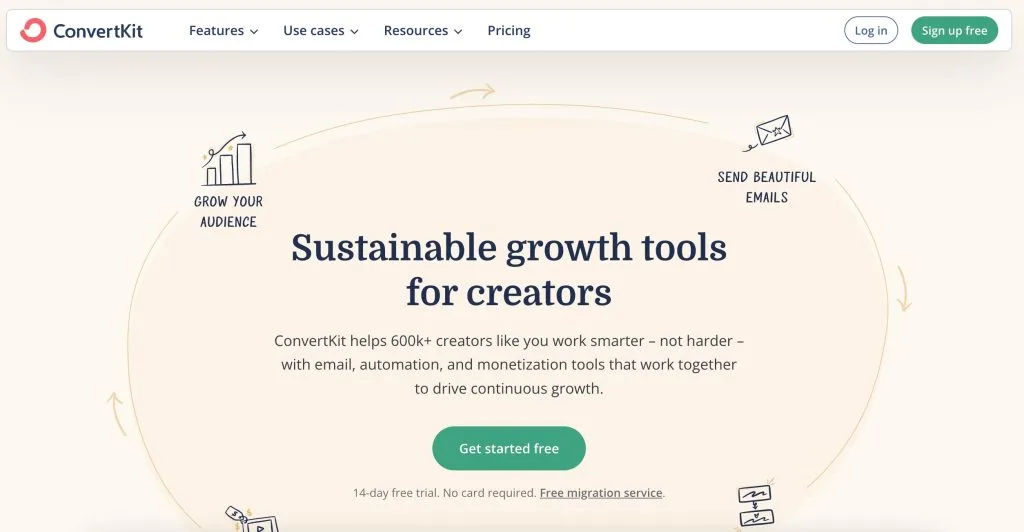
Pros of ConvertKit:
- Creator network for growth opportunities
- Paid newsletter feature for monetisation
- Built-in e-commerce features, like option to create and sell digital products
- Ready-made email and form templates
- 14-day free trial
Cons of ConvertKit:
- Templates are limited
- Basic editing features
- Price increases as your list grows
ConvertKit Pricing:
- Starts at $0 and increases with the number of subscribers
- Plans vary greatly, but the recommended plan for creators is $25/mo for up to 1k subscribers or $41/mo for 1k to 3k subscribers. Their basic plan for up to 10k subscribers is free.
4. Flodesk
Flodesk is known as one of the most simple email newsletter tools. Many creators and business owners love its simplicity, while others prefer more elaborate features.

Pros of Flodesk:
- Customisable templates
- User-friendly
- Detailed, easy-to-understand analytics
- Helpful customer support
- Private Facebook group to connect with other Flodesk users
- Consistent pricing, no matter how many subscribers you have
- 30-day free trial
Cons of Flodesk:
- Lacks complex template features
- E-commerce integration is an additional cost
- Email segmentation must be done manually
Flodesk Pricing:
- $38 per month for email only or $64 per month for email and e-commerce features
- The rate stays the same no matter how many subscribers you have
- Use this link to purchase Flodesk and receive 50% off a monthly or annual subscription
5. Mailerlite
Mailerlite helps about 700,000 creators and businesses with email marketing. It also has a feature for creating websites.

Pros of Mailerlite:
- 24/7 customer support
- Includes option to build your website
- Easily connects to other web apps, like Stripe and website builders, to automate workflows
- Detailed analytics feature
- Email templates with drag & drop editors for easy customisation
- 30-day free trial
Cons of Mailerlite:
- Difficult to use if you aren’t tech-savvy
- Occasional glitches
- Price increases as your list grows
Mailerlite Pricing:
- $0-$1,900 per month, depending on the number of subscribers and monthly emails
6. Brevo
Over 500,000 people use Brevo for email marketing. It also has chat and sales features to help you communicate with and earn money from your audience, which is ideal for e-commerce brands.
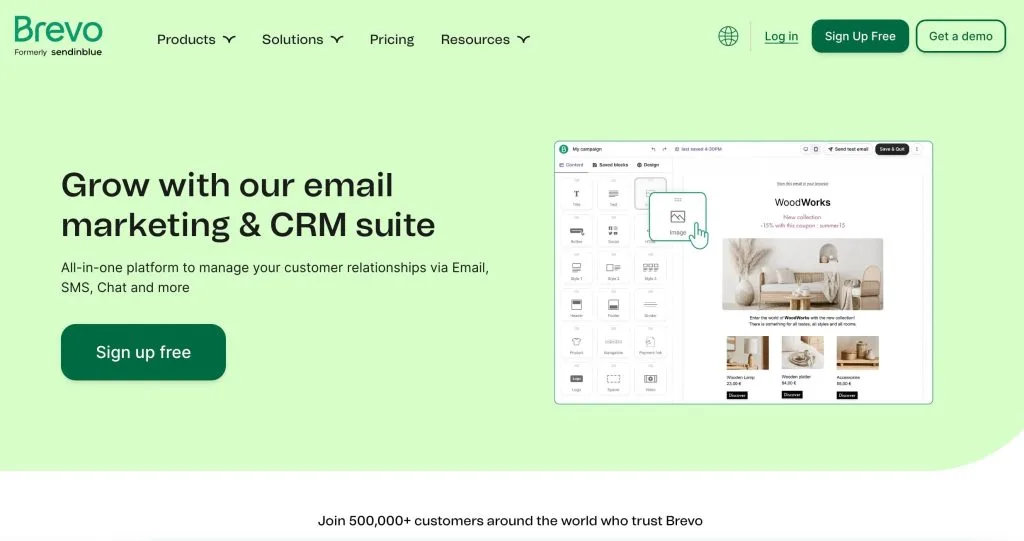
Pros of Brevo:
- Many email templates
- Option to add attachments to emails
- User-friendly
- Sales features for transactional emails
- Free and low-cost plans
Cons of Brevo:
- No signup form templates
- Unable to add emojis or videos to email
- Inconsistent email deliverability to subscribers
- Price increases as your list grows
Brevo Pricing:
- $0-$69 per month, depending on features and number of email subscribers
- A basic plan for up to 2,000 subscribers is free
7. Mailchimp
Mailchimp is one of the largest newsletter platforms, with over 11 million users globally. It’s also one of the first email newsletter software with a generative AI feature to help you create faster.
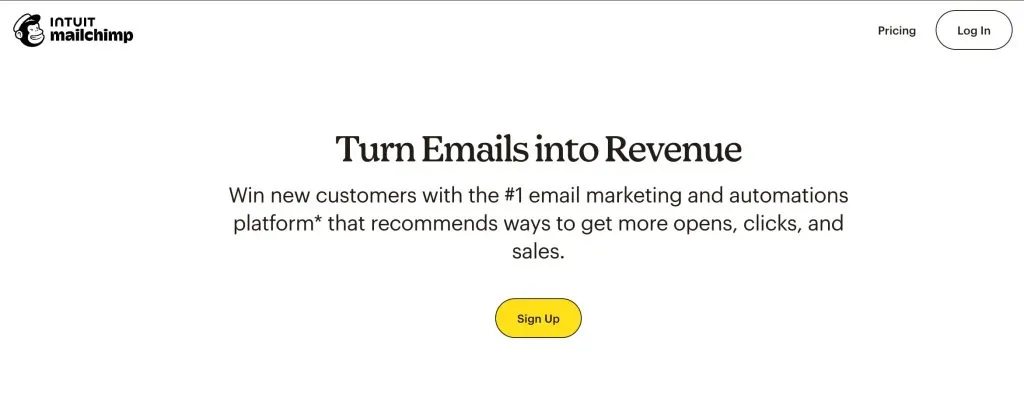
Pros of Mailchimp:
- Beginner-friendly
- Lets you easily import emails from another platform
- A/B testing feature
- Ability to include surveys in emails
- Can integrate your other tools (e.g., online store, website, social media, etc.)
- Advanced marketing automation features
- Free plan for small email lists
Cons of Mailchimp:
- The excess features can be confusing for new email marketers
- Limited free email templates
- Price increases as your list grows
Mailchimp Pricing:
- $0-$175 per month for the first year
- Prices double the second year
- The free plan is suitable for simple email marketing with a maximum of 500 subscribers
8. Campaign Monitor
Campaign Monitor is one of the best newsletter platforms if you already have a service or product-based business. It includes SMS marketing and e-commerce features, so it’s not the best option if you’re looking for a simple newsletter to write for your audience.
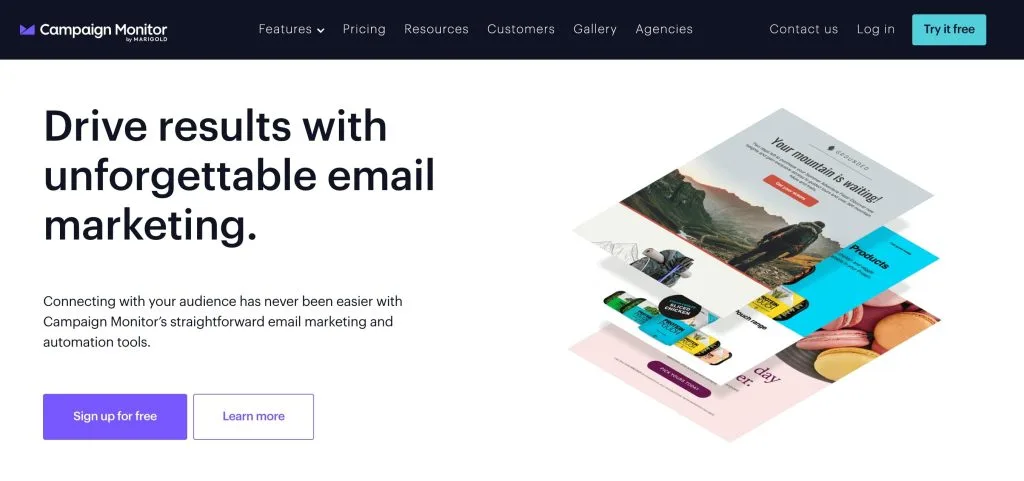
Pros of Campaign Monitor:
- Various email templates
- Simple analysis feature with tag campaign options
- Transaction email and SMS
Cons of Campaign Monitor:
- Can only view analytic reports via PDF
- Not the most user-friendly
- Price increases as you grow your list
- Free trial is limited
Campaign Monitor Pricing:
- $11-$989, depending on features and number of subscribers
9. Benchmark
Benchmark is a great email marketing platform, whether you want the simple free version or a more advanced paid version. It’s also one of the first to use an AI feature to help you create your emails.
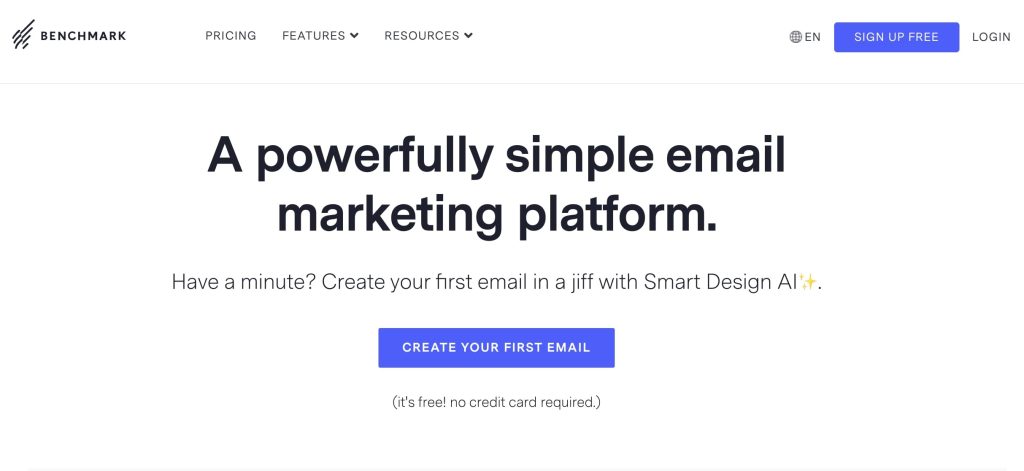
Pros of Benchmark:
- Content generator for email copy support
- Various email templates
- User-friendly
- Integration feature to connect other platforms you use (e.g., social media, website builder, etc.)
- Automation and testing features for a paid plan
- Free plan for up to 500 email subscribers
Cons of Benchmark:
- No signup form templates
- Prices increases as your list grows
Benchmark Pricing:
- $0-$499, depending on features and number of email subscribers
10. Zoho
Zoho prides itself on being one of the best email newsletter platforms for security and privacy. Its plans are also incredibly affordable.
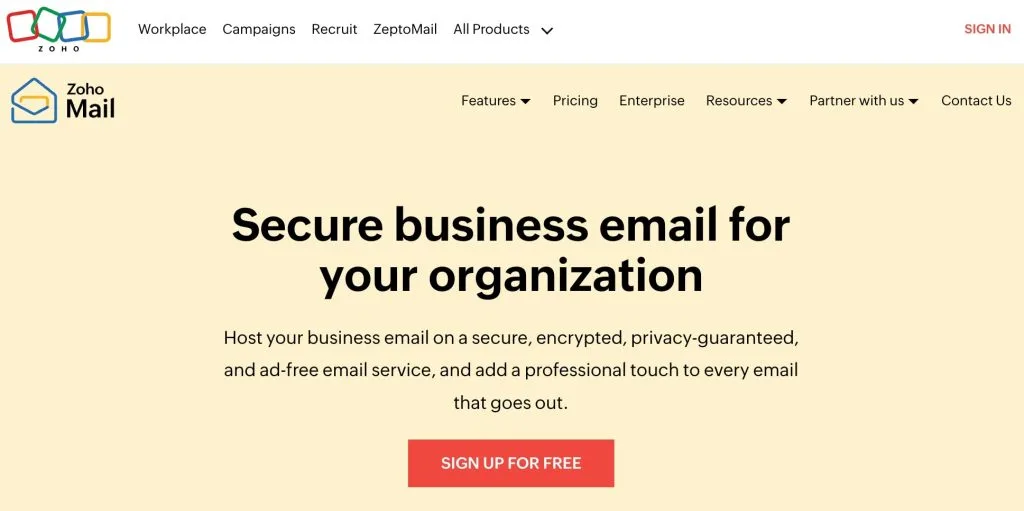
Pros of Zoho:
- Generous free and affordable plans
- Many features, including custom domain creation, AI assistance, and 24/7 support
- Easy email migration
- Many email template options
- Detailed analytics
- 15-day free trial
Cons of Zoho:
- Upgrade needed to segment and automate emails
- Editing templates can be tricky
Zoho Pricing:
- $1-$4 per month, depending on features
Best Newsletter Platforms: FAQs
Make the most of your email marketing strategy with answers to common questions below.
Is it easy to switch newsletter providers?
Switching email newsletter providers can take time, but it’s doable with most softwares.
If you currently have an email list and want to migrate it to a new software, it’s best to choose an option like Beehiiv or Flodesk that makes this simple. Make sure you migrate your email list before cancelling your previous provider.
What’s the best way to grow an email list?
The best way to grow your email list is to create a lead magnet that encourages people to join it. Lead magnets are usually free resources like an ebook, training, or discount code that people can sign up to receive by providing their email address.
You can set up a form and initial email using your email marketing platform to get people to sign up and then receive their lead magnet via email.
How often should I send newsletters to my audience?
To be successful with your email newsletters, the best frequency is one that you can reasonably stick to. Ideally, you’ll send at least one newsletter per month. Many people prefer to send them more often (e.g., weekly, biweekly, or daily) to stay in touch with their audience more often.
Avoid sending too many emails, as this may overwhelm your subscribers and force them to unsubscribe. A good rule of thumb is not to send more than one email per day.
Are free newsletter platforms worth using?
While there are a few newsletter platforms with free options, the features are usually limited. If you hope to grow your email newsletter over time, it’s best to go ahead and choose the option you like best, even if it’s paid. That said, there are some newsletter platforms you can start with for free and then move to a paid plan when you’re ready.
We hope you found this article on the best newsletter platforms helpful. If you’re interested in learning more about how you can grow your business, you might enjoy these articles:

